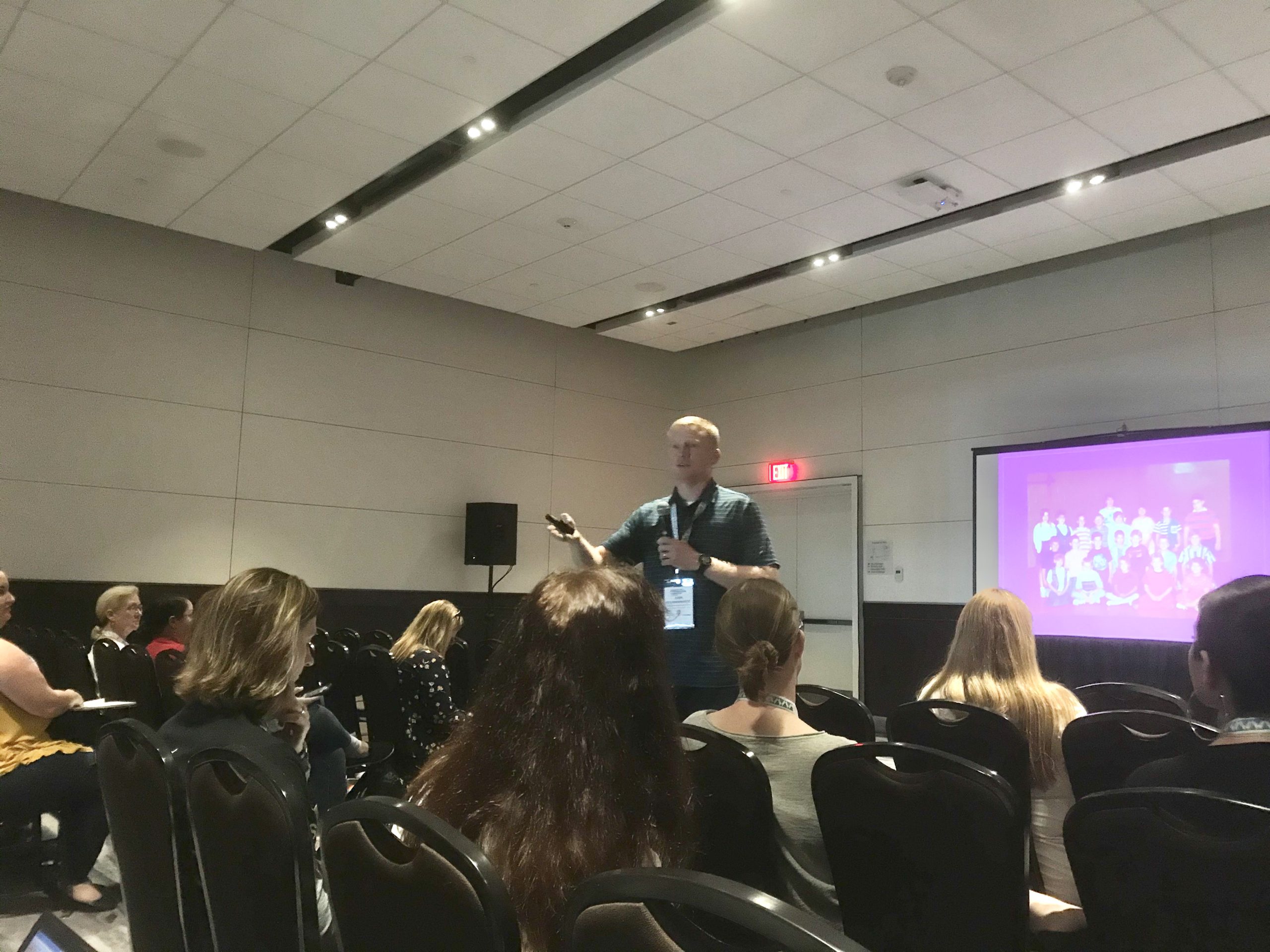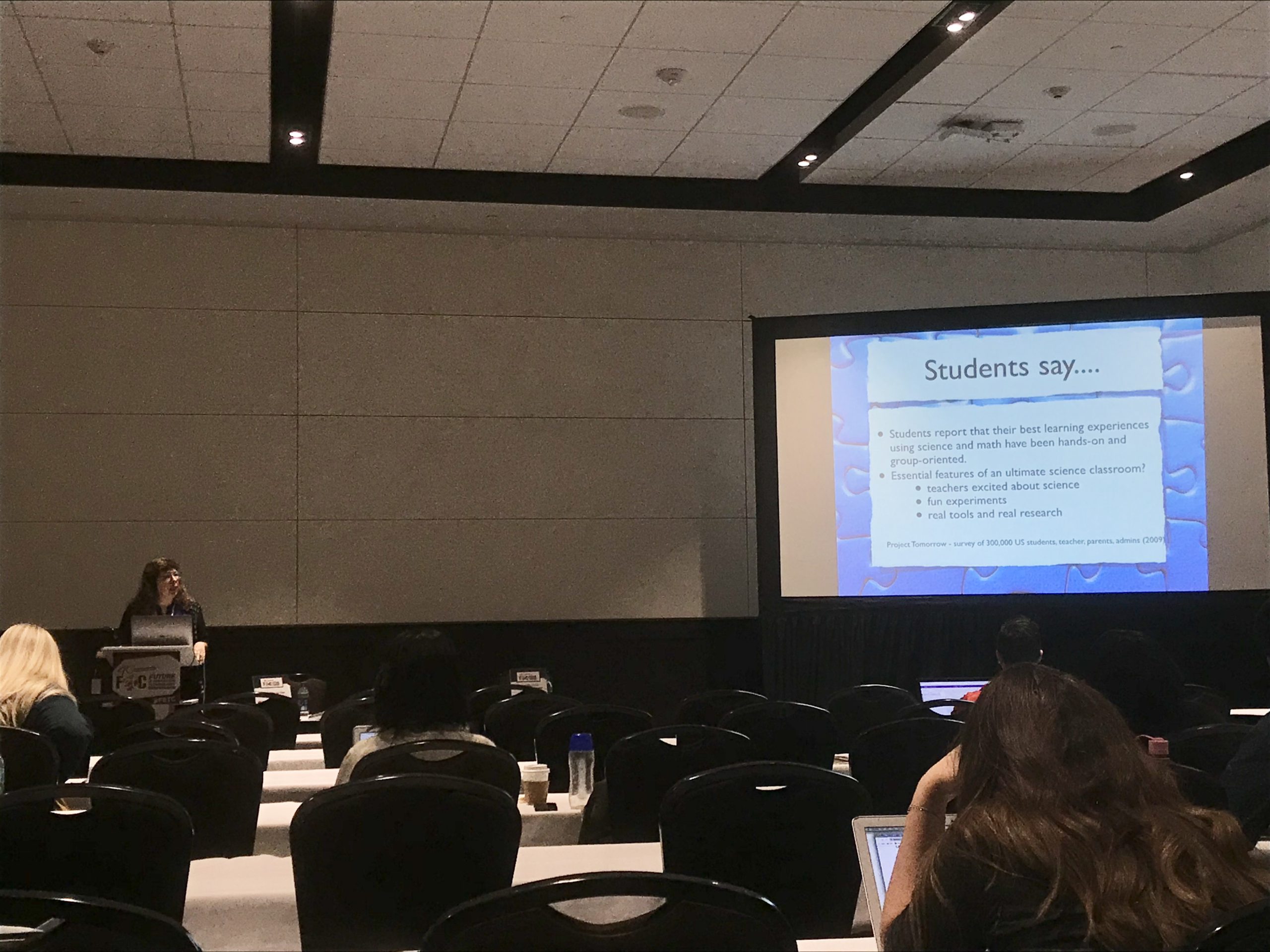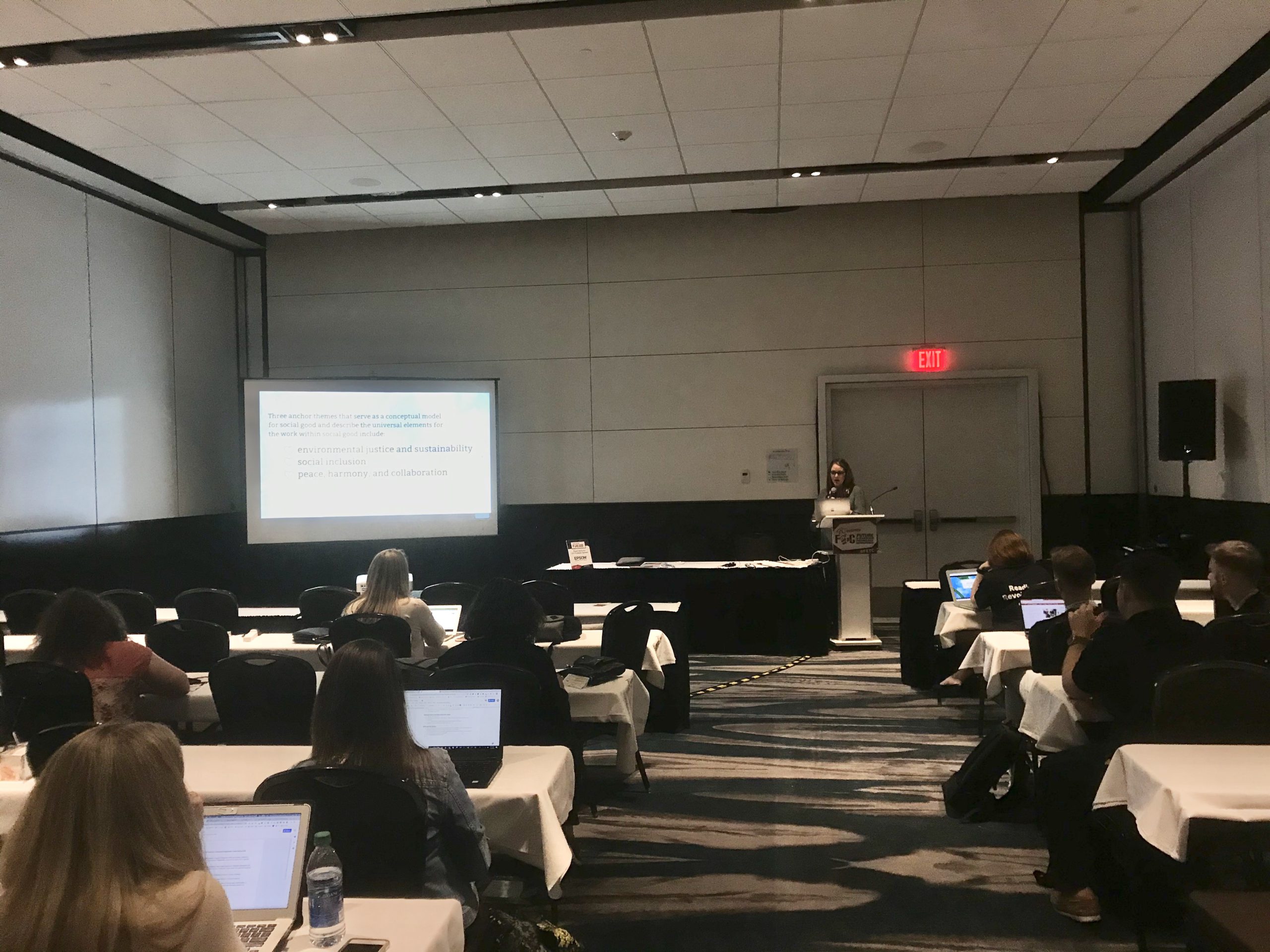The role of the library media specialist continues to evolve as experts in the field uncover more ways these leaders can improve collaboration, personalization and learning creation. FETC® launched a brand-new track on all things related to this important position to keep district administrators and even library media specialists apprised of changes and trends. Many speakers asked during their sessions (some even including the question in big letters on their slides): “What exactly do we do?”
The speakers in the Future of Ed Tech Library Media Specialist track discussed objectives and learning opportunities that these collaborators should bring into their libraries.
Bringing in students

The learning commons director who led “The Future Ready Library” session cut to the heart of the library’s role in K-12: to attract more students to the library. Appropriately, he started this discussion by sharing an image of a school library from his childhood that accurately depicted how he remembers the space. “Unfortunately, what I remember is that my librarian was mean,” said speaker Josh Stumpenhorst of Naperville Community School District 203. (Many in the audience had similar experiences or didn’t even remember their librarian at all.) “We need to change that,” he continued. “I want to create a space where all kids want to be.”
Of course, Stumpenhorst actively tries to get everyone into his library. For example, he has PE teachers use the virtual reality technology in his common area to show kids the inside of a black lung. But students always take priority. “There are times when teachers want to have meetings in this glass room we constructed here, and counselors have gotten mad at me because I have kicked them out,” Stumpenhorst told the audience. “They say, ‘I have a meeting with a group of people.’ And I say, ‘Get out. Students have meetings in there.’ Now, they don’t ask. Kids will always trump the adults.”
Bringing in more STEAM
Librarians who attended “Let’s Bring Literacy to Life Through Making and Technology!” viewed over 200 slides of numerous combinations of materials their libraries could use to enhance learning with textbooks. These projects were separated into numerous categories—from subjects on insects, cardboard creations and cooking to 3D printing, coding and automotive mechanics.
“We are constantly trying to think of more ways to bring STEAM and project-based learning into our learning,” said presenter Shannon Miller, who serves as a teacher librarian and spokesperson for The Library Voice. “We want these activities to keep our students busy so they are able to collaborate with each other and create.”
In her discussion on books that tie in global issues and diversity, Miller shared examples using both expensive and affordable materials. To augment Cinco de Mayo, Miller’s students have created maracas using spoons and masking tape. Other students Miller teaches have created the Eiffel Tower using 3D printers, 3D doodler pens and magnetic sticks to complement Everybody Bonjours!
Bringing in bio-making and bio-hacking

Conversely, author Sylvia Martinez of Invent To Learn brought up a statistic in her “Grow is the New Make” session that revealed how STEM is failing. The research asked if participants felt their school prepared students for STEM careers and majors. Just over 50% of administrators, less than half of teachers and parents, and a dismal percentage of students did.
“We are looking at a STEM crisis, but not for the reasons everybody is talking about,” Martinez told the audience. “I’m worried we are teaching an irrelevant subject matter that bores kids.”
What concerns Martinez isn’t the students who will work through this boring material and get a good STEM job. “I am worried about the kids who need to understand that science is a fascinating subject and that it’s more than boring numbers,” she said. Everyone needs to embrace STEM. “For example, a musician or a philosopher or anyone else who understands science better becomes a better citizen,” the author said. “We need to overhaul STEM with bio-hacking and bio-making to capture the curiosity of all kids regardless of whether they’re biologists.”
Bringing in more diversity and social good

In “Bold Learning Spaces,” Take Action Global Co-founder Jennifer Williams discussed ways media specialists can bring more diversity and social good into the library—but not in the ways her audience expected.
Williams discussed the elements of the Montessori school model. “The best trends we have been seeing in public education [are what] Montessori has been doing for a number of years,” she said. But public schools could adopt more elements, Williams added, such as how everything in a Montessori classroom is given purpose and priority. “For example, if there’s a flag on the wall, it isn’t just draped on a wall. They will put it in a place of importance and enshrine it in some way,” the expert told her audience.
Williams also discussed concepts and practices that she learned when working with classrooms around the world, including tent schools at a refugee camp in Africa. “This project is a great volunteer program for teachers to teach these kids using Skype,” she said.
“By optimizing physical and virtual spaces,” Williams told the audience, “we can reconfigure the conversations we have with students and all they represent and bring them to the center.”
For all FETC® coverage, click here.







